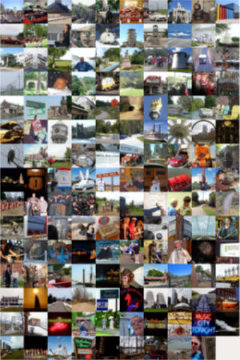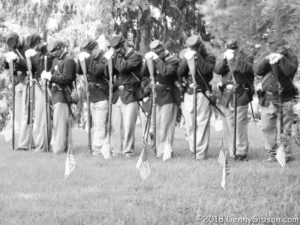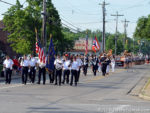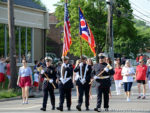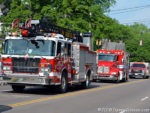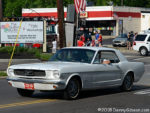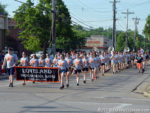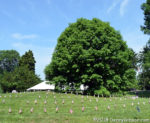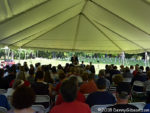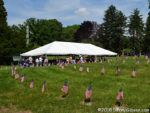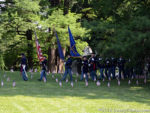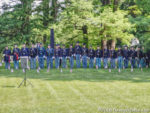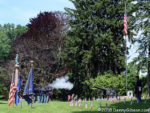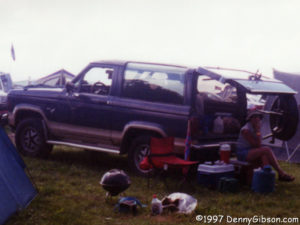 The Camaro was great fun to drive — mostly. On those fairly infrequent Cincinnati snow days, it was not. Well, maybe it was sometimes fun in a perverse slip-sliding-away sort of way, but it sure wasn’t relaxing. After one winter with it as my only vehicle, I went shopping for something a bit more winter friendly. The result was a very experienced V6 5-speed 1986 Eddie Bauer Edition Ford Bronco II.
The Camaro was great fun to drive — mostly. On those fairly infrequent Cincinnati snow days, it was not. Well, maybe it was sometimes fun in a perverse slip-sliding-away sort of way, but it sure wasn’t relaxing. After one winter with it as my only vehicle, I went shopping for something a bit more winter friendly. The result was a very experienced V6 5-speed 1986 Eddie Bauer Edition Ford Bronco II.
The Eddie Bauer package included several amenities that made it a near luxury vehicle. It was instantly recognizable by the tan (regardless of base color) lower body trim. Seats and upholstery were special and a premium sound system and power windows and locks were included. My new acquisition had once been a rather prestigious ride. The operative word in that sentence is “been”.
The odometer showed a little more than 10,000 miles but no one would have even briefly thought that accurate. In those days of five digit odometers, this one had clearly passed through its full range at least once. The description that quickly developed was “Everything you absolutely need works. Anything you don’t absolutely need doesn’t”.
When I first got the car, the power door unlocks worked. The lock side of the option had already quit functioning but I could initially unlock both doors with the push of a button. That didn’t last long. Lights for the speedometer and some other gauges worked but other dashboard illumination, such as that for the radio, did not. The dark radio dial was hardly an issue since the premium audio had pretty much quit functioning before I ever saw it. It wasn’t entirely dead, though, and a friend who borrowed the car (It made a good loaner.) described turning it on and listening to a faint but clear broadcast with the volume cranked all the way up. The system’s full capabilities were miraculously restored, and the car filled with ear piercing music, by a bump in the road. It didn’t last long, and another bump soon silenced things completely.
In the photo, the rear door is kept from dropping onto Chris’ head by a wooden dowel as the struts had stopped doing their job long before. I was somewhat surprised and extremely grateful that the power windows fell on the “absolutely needed” side of the great divide. Since air conditioning was apparently not “absolutely needed”, and therefore not working, I appreciated being able to roll down the windows in the summer but it did make me nervous. Having them fail while open and a monsoon approaching seemed almost inevitable but it never happened.
The starter failed a couple of times but even there I was personally lucky. Not so Chris. For me, it failed on pavement within walking distance of home. For her, it happened on a narrow road bordered by snow and mud.
The Bronco was key to making the hundred mile drive to my parents in the winter and as Dad’s health deteriorated its reliability became a concern. I replaced it in 2003 and gave it to my daughter. She had another car but the Bronco’s four wheel drive helped her get to work when snow hit. She lived and worked in town so there was no risk of being stranded on an isolated country road. As I recall, she junked it after one winter.
My Previous Wheels: Chapter 31 — 1994 Chevrolet Camaro
My Next Wheels: Chapter 33 — 1998 Chevrolet Corvette

 The question was never if there would be another book, just when and what. The answers are “now” (actually February) and “toll gates”. In my review of Cyndie L. Gerken’s first book, Marking the Miles Along the National Road Through Ohio, I noted that the huge amount of information presented in that book was only a portion of what Gerken has collected and that we would probably someday see “a Gerken penned treatise on bridges or taverns or toll houses or something else” which shows that taking three or four guesses really improves one’s chances of being right. Nailed it!
The question was never if there would be another book, just when and what. The answers are “now” (actually February) and “toll gates”. In my review of Cyndie L. Gerken’s first book, Marking the Miles Along the National Road Through Ohio, I noted that the huge amount of information presented in that book was only a portion of what Gerken has collected and that we would probably someday see “a Gerken penned treatise on bridges or taverns or toll houses or something else” which shows that taking three or four guesses really improves one’s chances of being right. Nailed it!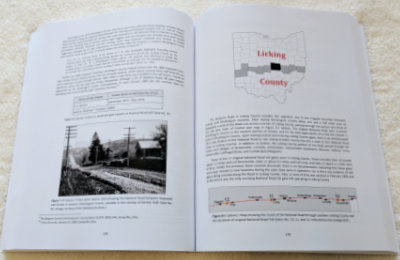 As she did with her first book, Gerken details her subject in a chapter per county moving east to west. However, before that happens, there is an introduction filled with information about the road and toll gates in general, then chapters on vehicles, toll house architecture, and bridges. Each of these, and the county chapters too, contain numerous photos and stories that color in the detailed information and keep things from becoming boring.
As she did with her first book, Gerken details her subject in a chapter per county moving east to west. However, before that happens, there is an introduction filled with information about the road and toll gates in general, then chapters on vehicles, toll house architecture, and bridges. Each of these, and the county chapters too, contain numerous photos and stories that color in the detailed information and keep things from becoming boring. Pictures of gate houses and gate keepers are to be expected, but they are not the only photo subjects presented. This might be the only book available with pictures of the world’s longest bar, grave robbers, a two-headed calf, a Spanish dime, Hopalong Cassidy, and the author’s mother riding in a goat cart. And every one of them belongs.
Pictures of gate houses and gate keepers are to be expected, but they are not the only photo subjects presented. This might be the only book available with pictures of the world’s longest bar, grave robbers, a two-headed calf, a Spanish dime, Hopalong Cassidy, and the author’s mother riding in a goat cart. And every one of them belongs.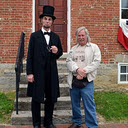
 Although a locator map wasn’t initially part of a trip journal, I did start doing it fairly early on then retrofitted one to journals already posted. A small button shaped like the contiguous US accesses the maps. For multi-day trips, the button is at the top of the cover page next to the trip title. For single day trips, it’s next to the trip title on the only page there is. The general model is a map of the route “zoomed” to fill the available space sitting atop a map of the US with a red rectangle marking the area involved.
Although a locator map wasn’t initially part of a trip journal, I did start doing it fairly early on then retrofitted one to journals already posted. A small button shaped like the contiguous US accesses the maps. For multi-day trips, the button is at the top of the cover page next to the trip title. For single day trips, it’s next to the trip title on the only page there is. The general model is a map of the route “zoomed” to fill the available space sitting atop a map of the US with a red rectangle marking the area involved.